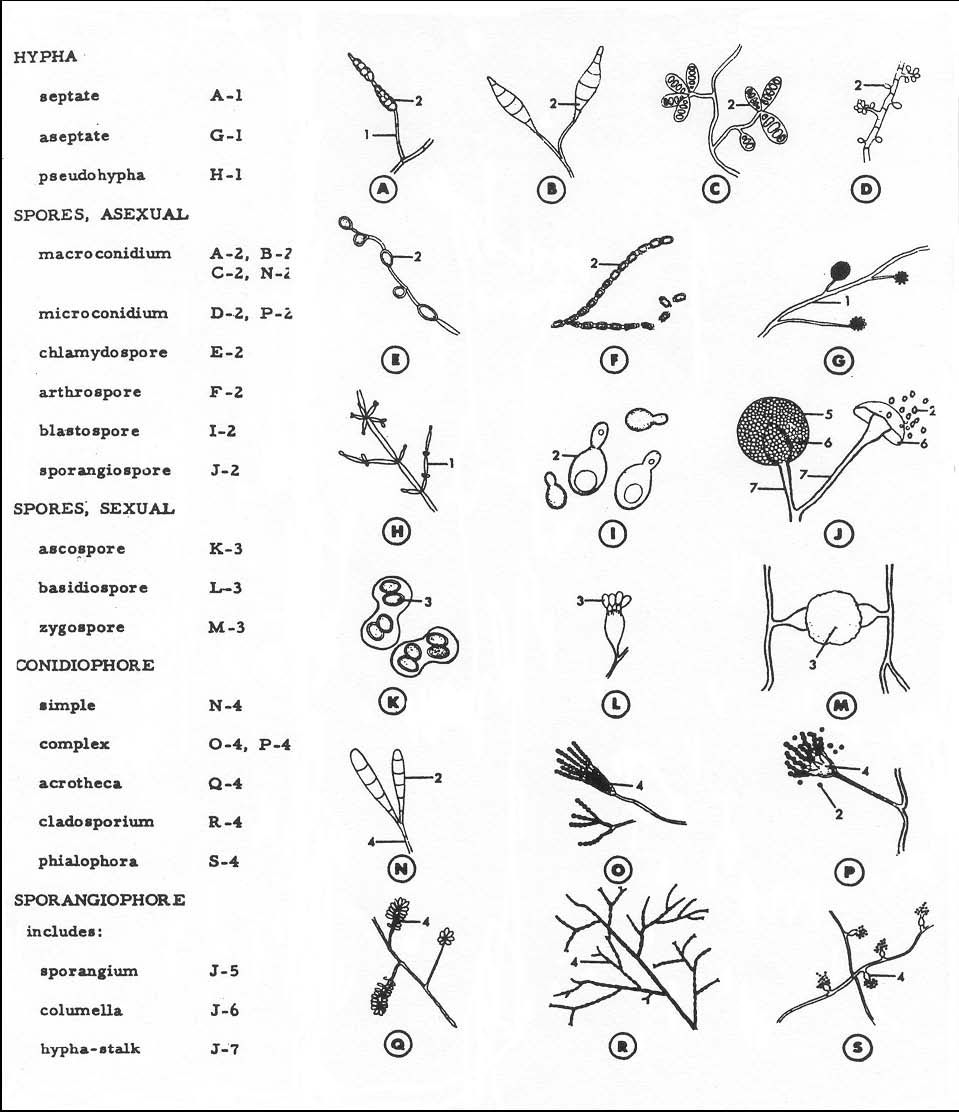Principles of Epidemiology and Microbiology
Lesson 2: Public Health Microbiology
Section IV: Fungi
2-19
2-19. CLASSIFICATION OF FUNGI
Fungi are usually classified according to biological taxonomy based upon the type of hypha, spore, and reproduction. There are four classes of fungi, whose characteristics are shown in Table 2-5 and figure 2-10.
a. Class Phycomycetes. The algal fungi: bread molds and leaf molds. The only known mycosis (fungal disease) caused by fungi of this class is mucormycosIs, a very rare fungal growth of the upper respiratory tract, bronchial mucosa, and lungs. It occurs largely as a complication of a chronic, debilitating disease, such as uncontrolled diabetes.
b. Class Ascomycetes. The sac fungi: yeasts, mildews, and cheese molds. Fungi of this class are implicated in only three fungus diseases, all of which are rare.
c. Class Basidiomycetes. Mushrooms, toadstools, rusts, and smuts. The only pathogens in this class are the mushrooms of the genus Amanita, which cause severe systemic poisoning (sometimes death) when eaten.
d. Class Deuteromyceters. Fungi imperfecti: a heterogeneous collection of fungi without sexual reproduction. Most of the pathogens encountered in medical mycology belong to this class.
|
Taxonomic class of Fungi |
Hypha |
Type of Reproduction
|
Characteristic spore |
Origin of Spore |
Examples of Fungi |
Pathogenicity |
|
Phycomycetes |
Asptate |
Asexually
Sexually |
Sporangio- spore
Zygospore or oospore
|
Sporangio phore
Fussion of nuclei
|
Nuisance fungi including general Absidia, Muclor, and Rhizopus |
Very rare Mucormycosis |
|
Ascomycetes
|
Septate |
Asexually
Sexually |
Blastospore
Conidium
Ascospore
|
Budding
Conidio- phore
Ascus |
Allescheria Aspergillus Piedraia
Saccharomyces (perfect yeast)
|
Rare Maduromcosis Aspergillosis Black Piedra |
|
Basidiomycetes |
Septate |
Sexually
|
Basidio- spore
|
Basidium |
Mushrooms, smuts and rusts
|
Rare Mushroom poisoning |
|
Deutero- mycetes {fungi imperfecti) |
Septate |
Asexually |
Thallospore
Conidium |
Thallus (hypha)
Conidio- phore |
Most saprophytes and pathogens encountered in medical mycology (Imperfect mold and yeast)
|
Most Mycoses encountered in medical mycology |
Table 2-5. Characteristics of Fungi.
Figure 2-10. Structural components of fungi.


